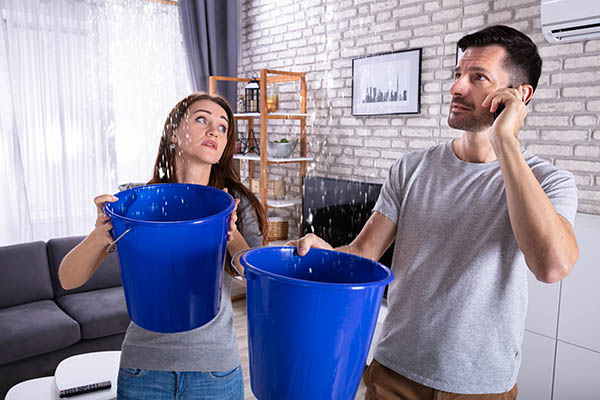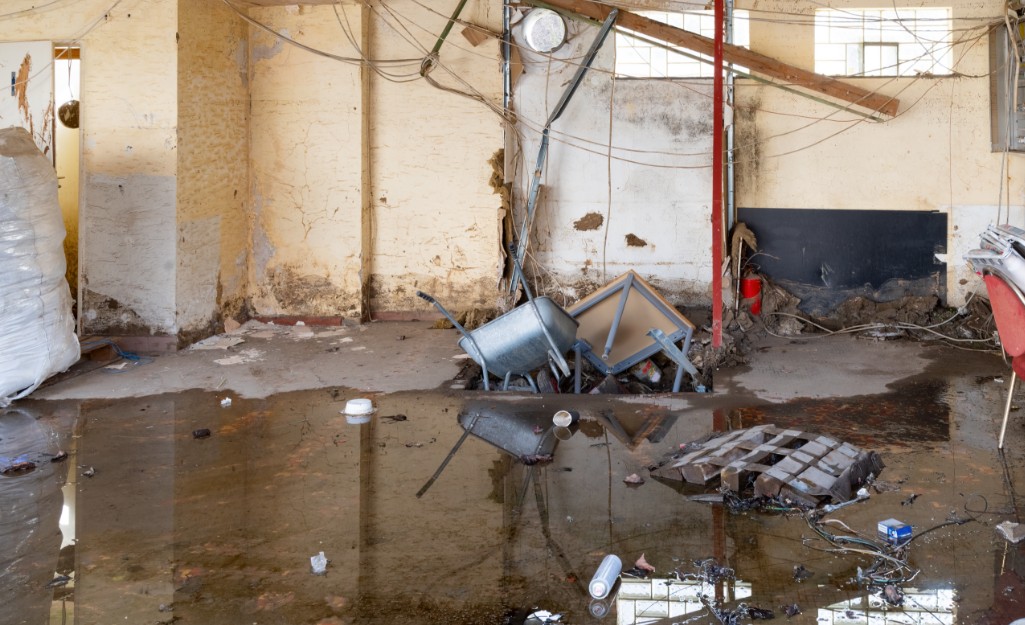Leading Tips for Effective Water Damage Restoration: Protect Your Building Today
Water damage can strike all of a sudden, triggering significant interruption and possible dangers. Effective restoration calls for a methodical method to reduce more harm. From evaluating the damage to applying precautionary steps, each action plays a crucial role in safeguarding property. Comprehending these approaches can make all the difference in the results of a water-related dilemma. What essential actions should be focused on to guarantee detailed security?
Analyze the Damage Immediately
When a water damage event takes place, it is vital to analyze the damage instantly to alleviate additional problems. This first evaluation helps establish the extent of the damage and identifies affected locations. Water can permeate into walls, floors, and furnishings, resulting in mold growth and architectural instability if not attended to quickly. A comprehensive inspection ought to include inspecting for discoloration, moisture, and musty smells, which suggest dampness existence. It is likewise essential to document the damage via photos and notes for insurance purposes. Involving specialists for a more in-depth analysis may be necessary, specifically when dealing with substantial or covert damage. Flood Cleanup Services. Early acknowledgment and precise analysis lay the structure for efficient restoration and protect the property from added problems
Shut Off the Supply Of Water
Shutting down the supply of water is a vital action in avoiding additional damage during a water-related event. When a leak or flooding occurs, immediate activity is vital to minimize the degree of the damage. Finding the major water shut-off valve must be a top priority. This shutoff is usually situated near the water meter or where the water line enters the residential property. When situated, turning the valve clockwise will quit the flow of water. In instances where the primary valve is inaccessible, specific shut-off valves for appliances might also be used. Immediately turning off the water supply not only safeguards the property from extra injury yet also promotes the succeeding restoration procedure, making certain that recovery efforts can start right away.
Remove Excess Water Quickly

Getting rid of excess water without delay is crucial for reducing damage and stopping mold and mildew development in affected locations. The longer water stays in call with materials such as drywall, wood, and insulation, the better the threat of structural damage and the advancement of mold. Water Damage Restoration. Homeowners should act rapidly to analyze the circumstance and utilize suitable devices, such as wet vacuum cleaners or pumps, to extract standing water successfully. If the volume of water is significant, speaking to expert restoration solutions may be required, as they can give specialized equipment and expertise. Furthermore, getting rid of furnishings and valuables from the damaged location can help to lower damage and assist in the general restoration procedure. Prompt activity not just shields residential or commercial property however additionally help in a smoother recovery journey
Dry Out the Affected Area
After removing excess water, it is necessary to dry out the damaged area thoroughly. This includes eliminating any type of standing water and improving air circulation to promote evaporation. Efficient drying will aid prevent mold and mildew growth and additional damage.

Get Rid Of Standing Water
Quickly resolving standing water is essential for reliable water damage restoration. The existence of stagnant water can cause additional property damage and develop an environment helpful to mold and mildew growth. To minimize these dangers, it is vital to remove standing water as rapidly as feasible. This procedure usually entails utilizing submersible pumps, wet vacuum cleaners, or specialized extraction tools. Specialists recommend reviewing the depth and extent of the water before determining on the ideal technique for elimination. Safety and security precautions need to additionally be taken, including putting on safety equipment and making sure power is transformed off in impacted locations. As soon as the standing water is effectively eliminated, the drying out procedure can start, further securing the residential property from recurring damage.
Increase Air Blood Circulation
Boosting air flow is crucial for successfully drying out areas influenced by water damage. This procedure aids to speed up dissipation, lowering the risk of mold and mildew and mildew growth. Specialists frequently advise using followers to create a consistent air movement throughout the room. Positioning box fans in windows can attract fresh air, while high-velocity fans can guide air movement towards moist surface areas. Water Damage Restoration. In addition, opening doors and windows permits cross-ventilation, enhancing the drying out procedure. Dehumidifiers can additionally be used to get rid of excess moisture from the air, additional helping in drying. By making sure that air circulates openly, homeowner can substantially minimize the long-term impacts of water damage and secure the honesty of their framework
Check for Mold Development
Mold development is a major issue following water damage, as it can lead to wellness problems and structural damage. After any kind of flooding or leaks, it is essential to conduct a comprehensive inspection of the impacted areas. This consists of checking surprise areas such as behind wall surfaces, under carpetings, click here and in attic rooms or cellars where dampness might linger. Indicators of mold and mildew include a musty odor, staining on surfaces, or visible growth. Building owners should make use of protective gear when inspecting, as mold and mildew spores can posture health and wellness risks. If mold is identified, it is crucial to resolve it instantly, as delaying remediation can worsen the problem and enhance the danger of significant health and wellness worries for occupants. Early treatment is crucial to effective mold monitoring.

Fixing and Restore Broken Structures
When dealing with water damage, it is vital to first assess the structural stability of the influenced locations. This examination helps identify potential risks and educates the required repair techniques. Engaging professional restoration solutions ensures that the restoration process is carried out safely and successfully.
Assess Structural Stability First
Before initiating any type of water damage restoration, it is necessary to evaluate the structural stability of the afflicted area. This assessment aids recognize any kind of endangered components, such as walls, beams, or structures, which may present safety and security threats - Water Damage Restoration. Examining for indicators of bending, breaking, or mold development is critical, as these indicators can disclose underlying damage that requires immediate interest. Furthermore, comprehending the level of the damage can lead restoration efforts and identify whether repair services are practical or if substitute is essential. It is important to document searchings for completely, as this info can be important for insurance policy cases or future reference. Prioritizing structural evaluation warranties that restoration initiatives continue securely and successfully, eventually securing the home and its residents
Use Professional Restoration Services
Utilizing expert restoration solutions is crucial for effectively fixing and bring back damaged structures after water cases. These professionals possess the required training, tools, and experience to examine and mitigate water damage completely. They can determine surprise issues, such as mold development and architectural weak points, that may not be quickly noticeable. Expert services also use innovative drying techniques and tools, making sure that all wetness is eliminated to stop more damage. Furthermore, they abide by sector requirements and policies, making sure that the restoration process is reliable and safe. By involving restoration specialists, residential property owners can expedite healing, lessen long-term damage, and inevitably protect their investment. This positive method is important in preserving the stability and security of damaged structures.
Stop Future Water Damage
To effectively avoid future water damage, homeowners should embrace a positive strategy to repair and maintenance. Regular assessment of roofing systems, downspouts, and seamless gutters is important; blocked rain gutters can bring about water overflow and roofing leaks. Additionally, looking for leakages in pipes components and appliances can prevent prospective damage. Home owners need to additionally take into consideration installing sump pumps in cellars or low-lying areas to handle water buildup. Securing splits in foundations and making sure appropriate water drainage around the home are vital action in guarding against water intrusion. Preserving humidity levels with dehumidifiers can prevent mold and mildew growth. By implementing these safety nets, home owners can substantially lower the risk of water damage and protect their building for the long-term.
When a water damage event happens, it is essential to assess the damage immediately to alleviate further concerns (Mold Remediation After Water Damage). Eliminating excess water immediately is vital for minimizing damage and protecting against mold and mildew development in influenced areas. Swiftly addressing standing water is essential for effective water damage restoration. The visibility of stationary water can lead to further property damage and produce an environment conducive to mold and mildew development. Prior to launching any type of water damage restoration, it is crucial to assess the architectural honesty of the afflicted area